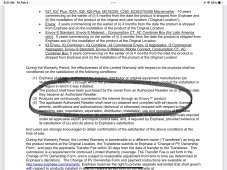Enphase grew in the early days by strong support from self-installers.
Lately, they make it increasingly difficult for self-installers to purchase, install and commission Enphase battery backup systems.
Cell Modem
A Cell modem is required for commissioning. There is absolutely no technical justification for this requirement!
Other backup systems make cell connections optional and CSI EP Cube even discourages the use of cell modems.
Certification
Self-installers need to complete training and pass certification in IQ8 installation, backup installation and backup system design!
Backup system design makes sense for commercial installers, but is overkill for self-installers.
A detailed load analysis is required, geared towards selling more underpowered and overpriced batteries, also overkill for self-installers.
At the end of the course, you are required to submit a full backup system design including a professionally drawn single-line diagram.
Try out https://www.figma.com/templates/schematic-diagram-example for drawing single line diagrams!
Company was recently acquired by Adobe for $20B, you can build your own components easily.
Sunlight-Only Hype
Don't buy in to the sunlight-only backup without batteries hype.
You have to buy
IQ8's, IQ-4 combiner or a similar combiner panel with mechanical breaker lock-down,
(check MidNite Solar's Enphase 3-string combiner with intergrated LoTo switch)
IQ gateway, a cell modem, a Zigbee wireless transceiver, IQ system controller 2 and 2(!) bloated load control panels.
Best of all: no backup and power during night or low solar irradiation!
Other Backup Options
Just because you have Enphase inverters does not force you into buying Enphase storage.
There are plenty of other AC coupled options for off-grid or grid-fault backup.
Schneider XW, Victron, SMA, FranklinWH, CSI EP Cube, QCELLS Q.Home, Alpha-ESS, FOX-ESS and many more.
Check post #108 and the Excel spreadsheet by hedges
Lately, they make it increasingly difficult for self-installers to purchase, install and commission Enphase battery backup systems.
Cell Modem
A Cell modem is required for commissioning. There is absolutely no technical justification for this requirement!
Other backup systems make cell connections optional and CSI EP Cube even discourages the use of cell modems.
Certification
Self-installers need to complete training and pass certification in IQ8 installation, backup installation and backup system design!
Backup system design makes sense for commercial installers, but is overkill for self-installers.
A detailed load analysis is required, geared towards selling more underpowered and overpriced batteries, also overkill for self-installers.
At the end of the course, you are required to submit a full backup system design including a professionally drawn single-line diagram.
Try out https://www.figma.com/templates/schematic-diagram-example for drawing single line diagrams!
Company was recently acquired by Adobe for $20B, you can build your own components easily.
Sunlight-Only Hype
Don't buy in to the sunlight-only backup without batteries hype.
You have to buy
IQ8's, IQ-4 combiner or a similar combiner panel with mechanical breaker lock-down,
(check MidNite Solar's Enphase 3-string combiner with intergrated LoTo switch)
IQ gateway, a cell modem, a Zigbee wireless transceiver, IQ system controller 2 and 2(!) bloated load control panels.
Best of all: no backup and power during night or low solar irradiation!
Other Backup Options
Just because you have Enphase inverters does not force you into buying Enphase storage.
There are plenty of other AC coupled options for off-grid or grid-fault backup.
Schneider XW, Victron, SMA, FranklinWH, CSI EP Cube, QCELLS Q.Home, Alpha-ESS, FOX-ESS and many more.
Check post #108 and the Excel spreadsheet by hedges
Last edited:



